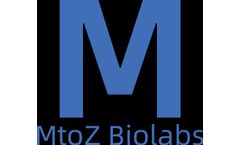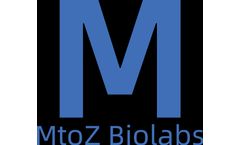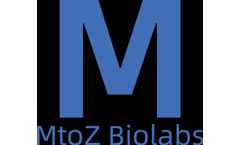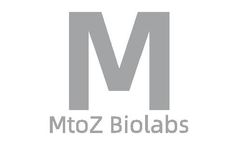Drug Delivery And Therapeutic Efficacy Articles & Analysis: Older
61 articles found
Disease Modeling: Knockin cell lines mimic human disease conditions by introducing disease-related genetic mutations, thus offering a robust platform to study pathophysiology and screen potential therapeutic interventions. Pharmaceutical Development: These cell lines are essential in the drug discovery pipeline, allowing for high-throughput screening and ...
Obesity is a significant contributor to respiratory disorders such as Obesity Hypoventilation Syndrome (OHS) and sleep apnea, both of which are characterized by reduced respiratory chemosensitivity. These conditions not only impair breathing but also exacerbate the health risks associated with obesity. Recent research from Rivera (2024) investigates the potential of setmelanotide, a ...
Liposomes, spherical vesicles composed of one or more phospholipid bilayers, have garnered significant attention in the field of drug delivery due to their unique properties. These nanocarriers offer a promising approach to overcome challenges associated with traditional drug administration, enhancing therapeutic ...
Medical advancement relies on clinical trials, which are essential for the development of safe and effective innovative treatments. However, the success and general applicability of these treatments heavily depend on the diversity of the participants involved¹?³. This blog explores the importance of achieving data diversity in clinical trials to enhance clinical trial results and ...
Functions of PeptidomimeticsPeptidomimetics have a wide range of functions and are being increasingly explored in drug discovery and development because of their potential therapeutic benefits. ...
The scientific realm behind the development and evaluation of therapeutic drugs, pesticides, industrial and environmental chemicals profoundly relies on a field of research called Pharmacokinetic/Toxicokinetic (PK/TK) studies. ...
Glycosylation impurities are a type of chemical commonly encountered in biochemical, medical, and pharmaceutical chemistry research. The presence of these impurities can affect the efficacy, safety, and stability of drugs. Therefore, the detection and analysis of glycosylation impurities are crucial in ensuring the quality and therapeutic effectiveness of pharmaceutical products.What are ...
In-depth research on protein interaction plays a crucial role in life science research. Proteins are the main bearers of life activities, and their interactions form a complex molecular network within biological cells. Protein-Protein Interaction Sequencing (PPI-Seq) is an emerging technology. Based on high-throughput sequencing, it allows researchers to explore protein interactions at the whole ...
Antibody-drug conjugates (ADCs) are a new class of drugs that combine the advantages of both antibodies and small molecule toxins. Compared with traditional cytotoxins, ADCs have the advantages of strong targeting, less toxic side effects, etc. They can accurately target tumor cells, reduce side effects, and improve the therapeutic effect.ADC drugs are mainly composed of monoclonal antibodies, ...
Dr. Kate Sasser from Tempus led a discussion on the potential of antibody-drug conjugates (ADCs), their challenges in targeting tumor antigens, and the future of cancer treatment with Dr. Daniel Johnson, Dr. Funda Meric-Bernstam, and Dr. Kellogg Parsons. The oncology field is rapidly advancing with the development of antibody-drug conjugates (ADCs), offering new hope for ...
ByTempus
Circular Dichroism (CD) uses the absorption properties of optically active substances to analyze the molecular structure of drugs. It has very valuable applications in drug analysis, including:1. Identification of Drug StereochemistryMany drug molecules are chiral, and their activity, metabolism, and toxicity can significantly differ due to stereochemistry. CD can differentiate the different ...
In the vast realm of drug discovery, the fusion of computational prowess and intricate molecular details has given birth to the revolutionary field of protein-small molecule docking. This innovative computational method delves deep into the complex molecular interactions between proteins and small molecules, paving the way for breakthrough advancements in therapeutic approaches and the era of ...
Host cell proteins (HCPs) are protein impurities produced by genetically engineered strains or cell lines. Some of these proteins are necessary for the survival, reproduction and other normal physiological activities of engineered strains or cell lines. HCPs are purified together with the target product during the production process and cannot be removed. Risks of HCPs In general, HCP ...
It involves the attachment or fusion of antibodies with other bioactive substances to enhance their efficacy in diagnostics and therapeutics. One key advantage that modified and conjugated antibodies have is their potential use in targeted drug delivery, especially in oncology. ...
Lipids are the basic substances that make up biological membranes. Through lipid-lipid interactions and interactions between lipids and other biomolecules, a complex network of lipid metabolism is formed, which is involved in a large number of life activities. By studying lipid extracts, information about the lipidome can be obtained. Lipidomics studies lipids in organisms at a systematic level, ...
SN38-BSA is a bioconjugate product that is effectively revolutionizing the field of drug delivery. This article focuses on understanding its makeup and how bioconjugation is instrumental in its function and efficacy. ...
Coupling drugs combine the precise targeting and potent killing properties, has become a widely recognized form of medication in recent years. Radioactive drug conjugates (RDCs), as a particular form of coupling drugs, are formed by combining radioactive isotopes with disease-targeting molecules. According to the application of RDCs, they can be divided into two main categories: diagnostic RDCs ...
In order to more effectively deliver chemotherapy drugs, Small Molecule Drug Conjugates (SMDC), Antibody Drug Conjugates (ADC), and Degradation Antibody Conjugates (DAC) have been successively explored and developed, enhancing the therapeutic index while providing selective delivery. ...
Inorganic Nanoparticles Functionalization Inorganic nanoparticles, such as gold or silver nanoparticles, have unique properties that make them suitable for drug delivery applications. These nanoparticles can be functionalized with targeting ligands or therapeutic agents to enhance their efficacy and specificity. ...
Introduction For years, scientists have leveraged the brilliant potentialities of genetic science to explore how cells function and interact in living organisms. Among the numerous tools employed are "reporter systems," which use a visible marker to track gene expression, protein interactions, and other vital biological processes. One such system employs reporter lentiviral particles, using the ...















